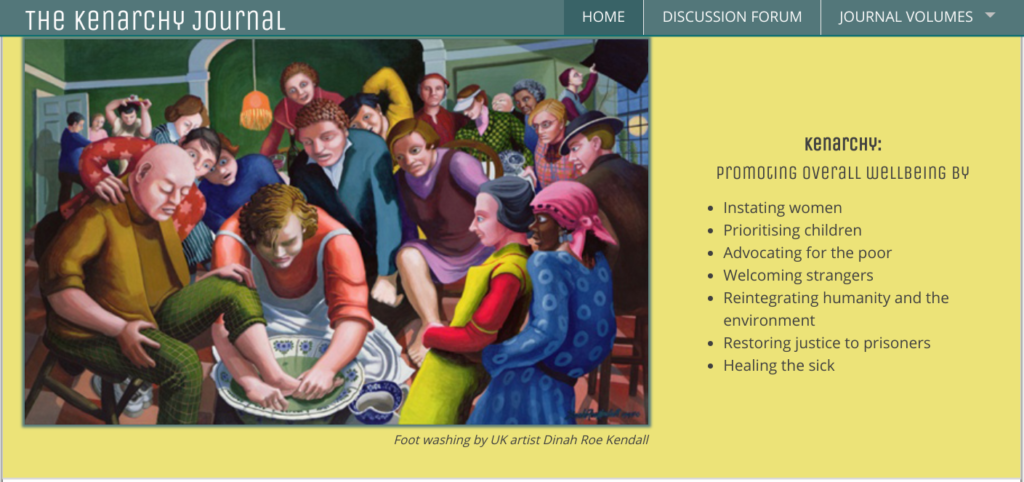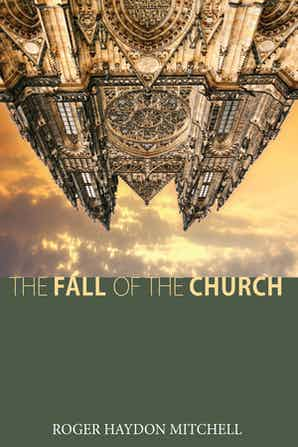The devil led him up to a high place and showed him in an instant all the kingdoms of the world. And he said to him, “I will give you all their authority and splendour; it has been given to me, and I can give it to anyone I want to. If you worship me, it will all be yours” (Lk. 4:5-7).
Quick acknowledgement: I picked up the consistent use of the Greek word ‘oikoumene’ as being a reference to the inhabited world of Rome in Andrew Perriman’s writings, then began to look at Luke’s use.
Skip the next part if you wish… it is simply the background as to why this word ‘oikoumene’ is not simply a synonym for ‘world’ (kosomos), but is more concrete… and in the Lukan context is referring to the Roman Empire.
All the kingdoms of the world (πάσας τὰς βασιλείας τῆς οἰκουμένης): the kingdoms of the oikoumene. This last word can be used (at times) interchangeably with the term ‘world’ (kosmos) and Matthew uses this term (kosmos) in his account of the temptations (Matthew 4:8), where Luke uses the term oikoumene.
The two terms can be used interchangeably, the kosmos term is certainly global and the term oikoumene is rooted in the verb oikeo (to dwell), and although it can carry a global sense, being simply synonymous to the word kosmos, many authors choose to use it in a more restrictive way, to refer to where people dwell, the inhabited world, the civilised world. This then opened it to something even more specific: the boundary of a specific political entity.
Luke is one of those authors, and given that he is writing his two volumes for the world of the Roman Empire it makes sense that he uses this word oikoumene in the restrictive sense of the ‘Roman world’, the ‘Roman Empire’. Before coming to Luke’s use a few other examples.
Josephus (Jewish aristocratic Jewish historian, 37AD-100AD (approx datre of death)) uses the term oikoumene to refer to the geographical extent of the Roman Empire, recording that Agrippa had said to Caius that he hoped one day Caius would be appointed ruler of the world (oikoumene), in other words that he would become Caesar over the Roman Empire.
Likewise the Old Testament uses it to describe territory within a political boundary.
- Babylon, for her sins, will experience an armed nation coming and destroying the whole oikoumene (Is. 13:4,5,9,17,18,19). The Medes come and destroy the Babylonian empire, they destroy the whole oikoumene, not the whole world.
- In Daniel we have Nebuchadnezzar ruling the whole oikoumene (Dan. 3:2), he is the ruler of the Babylonian Empire.
Luke seems to consistently use oikoumene to carry this meaning of territory ruled by a political entity, and that entity being Rome.
- The whole oikoumene was to be registered (Lk. 2:1), the whole ‘world’ being the world that Caesar ruled over.
- Agabus warns of a famine that would come on the whole oikoumene (Acts 11:8), this famine came during the reign of Claudius (Roman Emperor).
- The Gospel proclamation turned the whole oikoumene upside down, the order of Rome (Acts 17:6-7).
- Artemis was ‘worshiped throughout the province of Asia and the oikoumene‘ (Acts 19:27). The claim was that she was worshiped throughout the Roman province of Asia and beyond throughout the whole Roman Empire.
Luke is therefore using the term for the Graeco-Roman world, using it very concretely.
Back then to the temptations of Jesus. It is not too far a stretch to push Luke’s account of the temptations to being a concrete offer of the Roman Empire to Jesus. That fits with his consistent use. The offer of being the new Caesar: Jesus appointed as anti-Christ!
Luke 3 begins with the setting, not simply historically, but concretely and ‘spiritually’ in terms of the dominating powers:
In the fifteenth year of the reign Tiberius Caesar.
Replace Tiberius… bring about the change you want!
In Mark’s Gospel we have the intriguing extra that Jesus was in the wilderness with the ‘wild animals’. A truly eschatological scene fulfilling ‘the wolf will lie with the lamb’ (Is. 11:6 and Mk. 1:13), but perhaps given that Israel was the counterpart to Adam who is given responsibility for creation, for the animals, it was not surprising to have Israel as ‘son of man’ and all opposing kingdoms to be presented as beasts (wild animals, hence the description of political powers opposing heaven’s agenda as ‘beasts’). In Mark then there is probably also a hint of true shalom to the nations, even to the nations that opposed the direction of heaven.
He does not rule over the nations as per Rome; the Rome that brought peace through war! Jesus brought peace, but not peace as the world gives (woe to you who say ‘peace, peace’ fits this context). There is a shalom, true peace, the wild animals were with him.
Peace on earth, being the announcement from heaven (Lk. 2:14) then takes on a strong anti-imperial sense.




